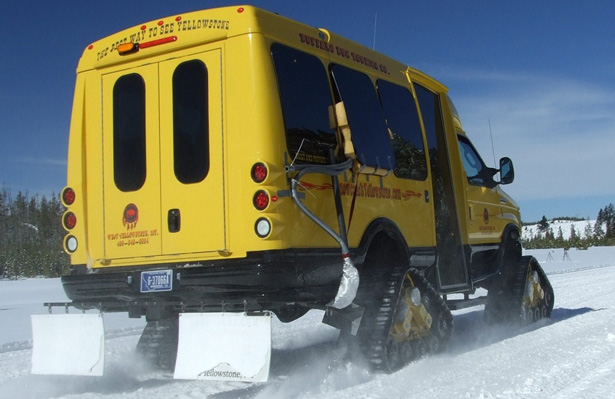NC State Research Helps Shape Yellowstone ‘Winter Use’ Plan

Editor’s Note: This is a guest post by Dr. Chris Frey, distinguished university professor of civil, construction and environmental engineering. Frey is also chair of the EPA Science Advisory Board’s Clean Air Scientific Advisory Committee.
On February 22, the National Park Service released a plan to guide winter use of over snow vehicles (OSVs), including snowmobiles and snow coaches, in Yellowstone National Park. This plan is based in part on in-use measurements made by researchers at North Carolina State University and the University of Denver of the actual air pollutant emissions of snow coaches and snow mobiles that operate in the park. The latest information on the winter use plan is being reported in media outlets such as USA Today.
Using a Portable Emissions Measurement System (PEMS), five snow coaches and three snowmobiles were measured by the NC State and DU team in March 2012 on a snow covered 32-mile route used by park visitors. In January 2013, these data were reviewed and summarized by the National Park Service for incorporation into air quality analyses that are a key component of the winter use plan. The National Park Service determined that, compared to other measurement approaches, pollutant emissions measured based on PEMS are the most valid data source for assessing comparability of OSV transportation event emission levels.
Newer snow coaches were found to have low emissions with the exception of one underpowered conversion vehicle. Two diesel powered snow coaches that had the latest emission control technologies to control nitrogen oxides and particulate matter also had very low emission rates. The smaller, higher revving engines of the snowmobiles produced much higher carbon monoxide emissions than the larger lower revving engines of the snow coaches. Overall, the newer snow coaches were found to be substantially lower emitting than earlier models measured in previous studies, and to be lower emitting per passenger mile than snowmobiles.
These data were used by the National Park Service in air quality modeling studies and to decide on “Best Available Technologies” that will be allowed to operate within the pristine park. The results of NC State’s measurements will be presented at the Annual Meeting of the Air & Waste Management Association this June in Chicago.
Field measurements were made by graduate students Gurdas Sandhu and Brandon Graver of my group, and additional data analysis was performed by Jiangchuan Hu. Dr. Gary Bishop and his group from DU participated in field measurements.
- Categories:


